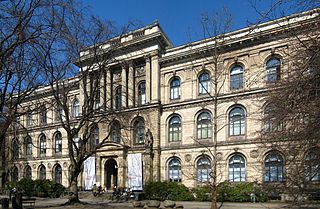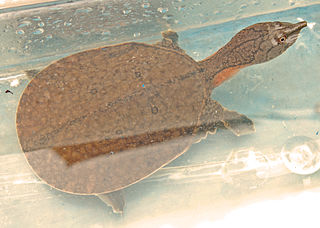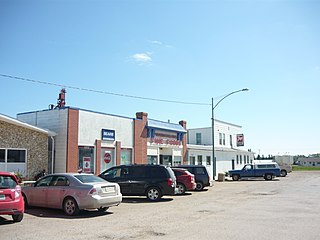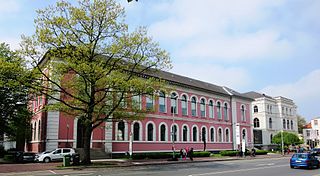
A mongoose is a small terrestrial carnivorous mammal belonging to the family Herpestidae. This family is currently split into two subfamilies, the Herpestinae and the Mungotinae. The Herpestinae comprises 23 living species that are native to southern Europe, Africa and Asia, whereas the Mungotinae comprises 11 species native to Africa. The Herpestidae originated about 21.8 ± 3.6 million years ago in the Early Miocene and genetically diverged into two main genetic lineages between 19.1 and 18.5 ± 3.5 million years ago.
Arnold Gehlen was an influential conservative German philosopher, sociologist, and anthropologist.

The Natural History Museum is a natural history museum located in Berlin, Germany. It exhibits a vast range of specimens from various segments of natural history and in such domain it is one of three major museums in Germany alongside Naturmuseum Senckenberg in Frankfurt and Museum Koenig in Bonn.

Goldau is a city in the community of Arth, canton of Schwyz, Switzerland. It lies between two mountains, the Rigi and the Rossberg. Well known attractions include the Natur- und Tierpark Goldau and the Arth-Goldau valley station of the Arth-Rigi Bahn connecting to the Rigi mountain.

The timeline of human evolution outlines the major events in the evolutionary lineage of the modern human species, Homo sapiens, throughout the history of life, beginning some 4.2 billion years ago down to recent evolution within H. sapiens during and since the Last Glacial Period.

Bear JJ1 was a brown bear whose travels and exploits in Austria and Germany in the first half of 2006 drew international attention. JJ1, also known as Bruno in the German press, is believed to have been the first brown bear on German soil in 170 years.

The Palaeontological Museum in Germany, is a German national natural history museum located in the city of Munich, Bavaria. It is associated with the Ludwig-Maximilians-Universität. It has a large collection of fossils of animals and plants such as Mesozoic reptiles, early elephants and saber-toothed cats. The paleontological and geological institute which houses the museum is formally called the Bavarian State Collection for Palaeontology and Geology, which itself is one of several institutions which make up the Bavarian Natural History Collections.

The Bavarian State Collection of Zoology or ZSM is a major German research institution for zoological systematics. It is in Munich, and with over 20 million zoological specimens it is one of the largest natural history collections in the world. The sections are Entomology, Invertebrates and Vertebrates. The history of the museum is outlined on the museum's home page together with a biography of Johann Baptist von Spix the first curator of zoology.

The Malayan softshell turtle is a species of softshell turtle in the family Trionychidae. It is monotypic in its genus.

Wilhelm Bölsche was a German author, editor and publicist. He was among the early promoters of nature conservation.

The German Hunting and Fishing Museum is a museum exhibiting objects connected with the history of hunting and fishing in Germany or other territories which nowadays belong to it.

Bruno is a town located 90 km east of Saskatoon and 35 km west of Humboldt. Its current mayor is Dale Glessman.

Protein AATF is a protein that in humans is encoded by the AATF gene.

The Schöningen spears are a set of eight wooden throwing spears from the Palaeolithic Age that were excavated between 1994 and 1998 in the open-cast lignite mine in Schöningen, Helmstedt district, Germany, together with an associated cache of approximately 16,000 animal bones. The excavations took place under the management of Hartmut Thieme of the Lower Saxony State Service for Cultural Heritage (NLD).

The German Hygiene Museum is a medical museum in Dresden, Germany. It conceives itself today as a "forum for science, culture and society". It is a popular venue for events and exhibitions, and is among the most visited museums in Dresden, with around 280,000 visitors per year.
Peter van Mensch, born June 7, 1947 in Gouda, Netherlands is a Dutch scientist in the field of museology and a professor of Cultural Heritage at Amsterdam School of Arts.

Herr Jesu Christ, wahr' Mensch und Gott, BWV 127, is a cantata by Johann Sebastian Bach for use in a Lutheran service. He composed the chorale cantata in 1725 in Leipzig for the Sunday Estomihi, the Sunday before Lent. It is based on Paul Eber's 1582 hymn in eight stanzas "Herr Jesu Christ, wahr Mensch und Gott". Bach first performed it on 11 February 1725.

The State Museum for Nature and Man is a natural history, ethnology, and archaeology museum in the city of Oldenburg, Lower Saxony, Germany.

The Natural History Museum in Bielefeld is a natural history museum in the city of Bielefeld in North Rhine-Westphalia, Germany. Since 2003, it was given the additional name namu, which stands for the German words Natur (nature), Mensch (man), and Umwelt (environment). The exhibitions take place in the Spiegelshof, a historical building from the 14th century.

Max Born was a widely influential German physicist and mathematician who was awarded the 1954 Nobel Prize in Physics for his pivotal role in the development of quantum mechanics. Born won the prize primarily for his contributions to the statistical interpretation of the wave function, though he is known for his work in several areas of quantum mechanics as well as solid-state physics, optics, and special relativity. Born's entry in the Biographical Memoirs of Fellows of the Royal Society included thirty books and 330 papers.


















